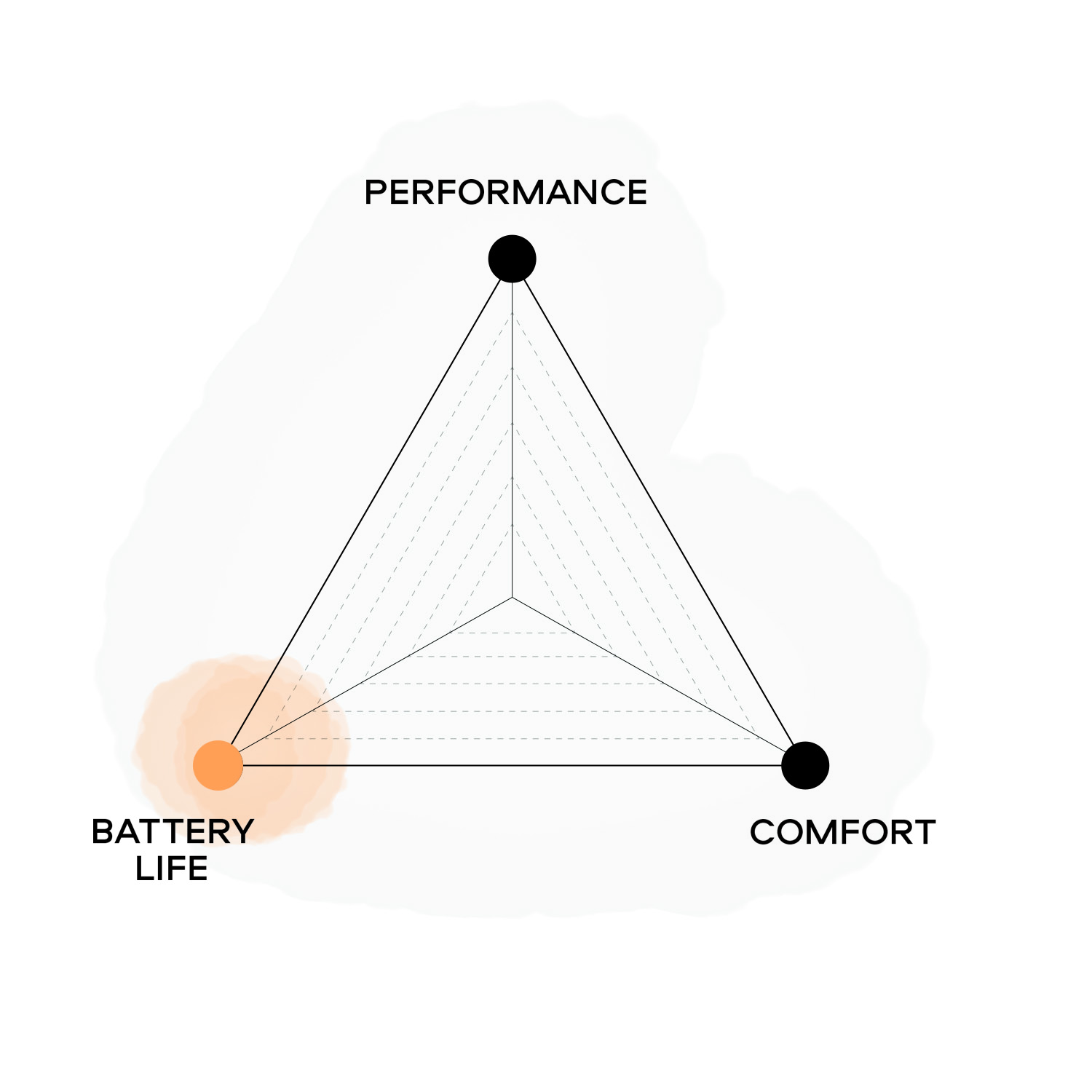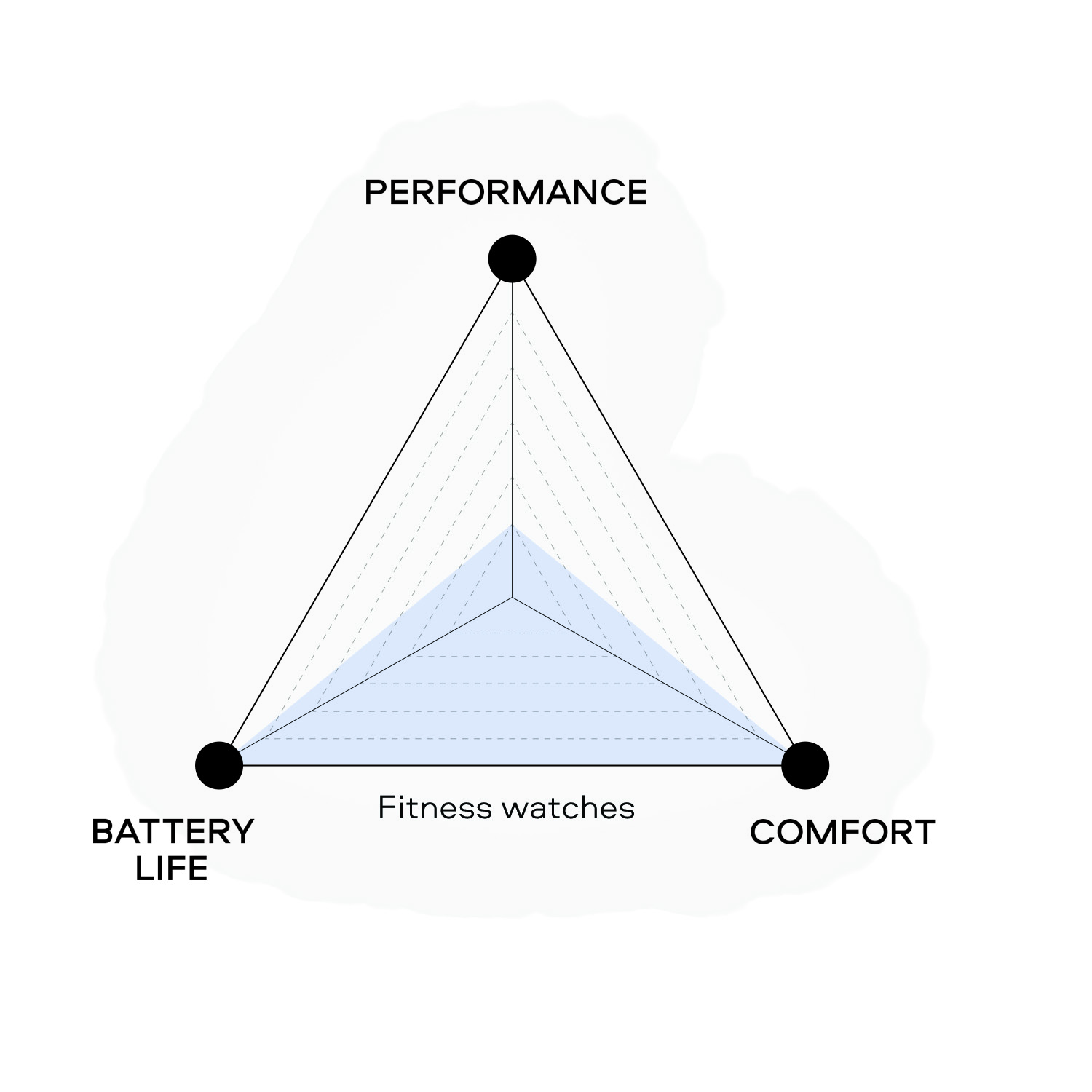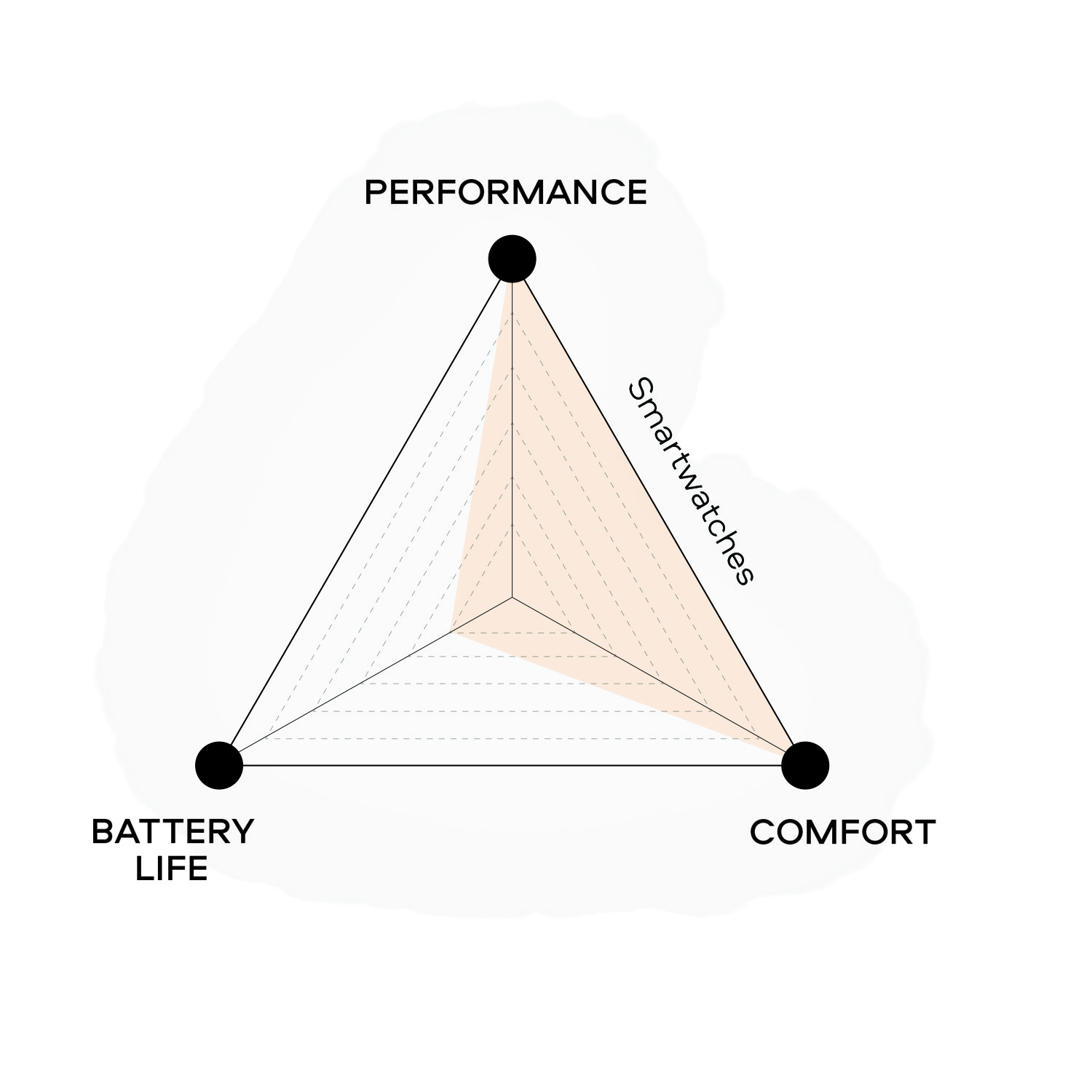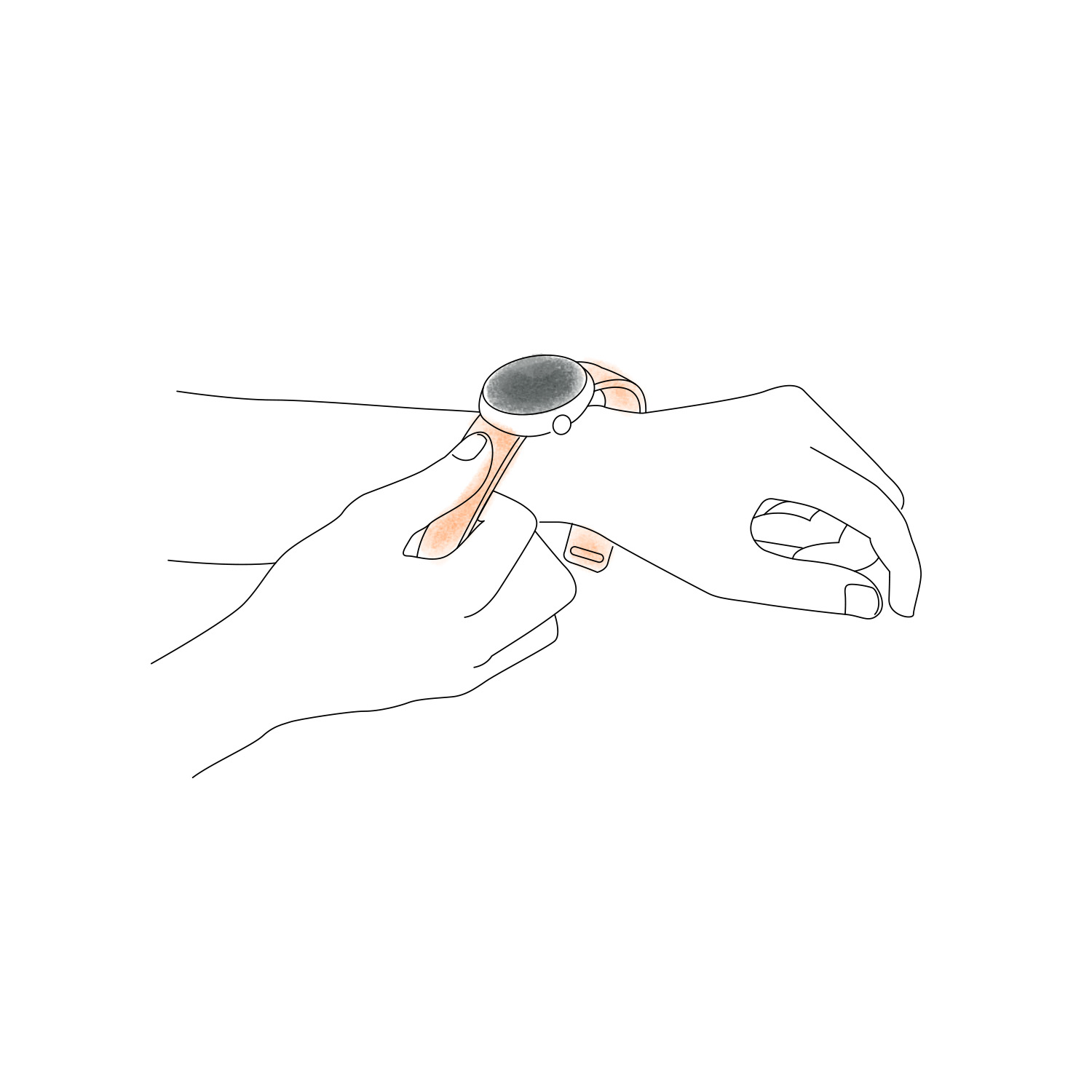Smartwatches are among the most widespread wearable technology and perhaps one of the most challenging to design. Their proximity to the human body and position around a highly visible area pose unique design challenges that tech brands haven’t been able to address.
When designing smartwatches, designers and engineers often struggle to find a trade-off between three main opposing factors: Comfort, Performance and Battery life.
In this article we will analyse how these three factors are driving the smartwatch market and will explore whether creating a smartwatch without compromises is even possible.
Comfort vs Performance vs battery life: a constant battle.
COMFORT. The analog watches we have been using for centuries, that smartwatches are designed to replace, set very high expectations in all of us. We expect smartwatches to be small, thin and light, to feel good on the wrist all day long, not to get caught under long sleeves, to look great with different outfits, to be customisable and fashionable.
Although in the early ages of smartwatches (early 2010’s) we have seen wild explorations with very capable but huge-sized wearables that looked like smartphones strapped to a wrist, the market has now made it clear that comfort should be a sine qua non condition for smartwatches to be adopted.

PERFORMANCE. Modern top smartwatches are expected to feature LTE connectivity, GPS activity tracking, NFC, smart assistant support, ECG reading, a large always-on touch user interface and should be compatible with the most popular third party apps.
As the smartwatches category is maturing, brands are in a constant rush to add the newest cool feature to differentiate, demanding an always increasing amount of space, energy and processing power.

BATTERY LIFE. Li-ion battery technology powers the majority of modern tech, from laptops, to smartphones, e-mobility and wearables, including smartwatches. As the Energy Density, described as the amount of energy a battery stores per unit volume, is a constant (about 690 Wh/L), it is not possible to increase the stored energy of a battery without increasing its size.
As a result, most modern smartwatches mount a battery of about 350-450mAh, that comes in an approximately 40x30x4mm package, a volume that fits well into a common wrist watch form factor, but is only able to power a watch for about one day in normal conditions.

‘When designing a smartwatch, design and engineers need to find balance between these three factors, giving more importance to some while compromising on others.
As a result, the smartwatch market can be mapped into three main categories each ‘trading-off’ one factor over the other two.’

Fitness watches (good comfort, good battery life, limited performance)
Fitness watches are generally slim and light, with a simple user interface. Their functionalities are mostly oriented on tracking fitness and lifestyle data.
They typically offer a good battery life (a few days to a week) and are comfortable to wear, however they lack advanced features that top smartwatches offer.
EXAMPLES: Fitbit Versa / Sense

Smart watches (good comfort, good performance, poor battery life)
Smartwatches are generally comfortable enough to wear, and integrate a variety of smart features such as managing messaging and calls, smart assistant support, always on display and compatibility with third party apps. However, all these features come with a price, as they struggle to reach a one day battery life in normal conditions.
EXAMPLES: Apple Watch 8, Galaxy Watch 5, Pixel Watch

‘Pro’ Smart watches (poor comfort, good performance, good battery life)
Professional smartwatches are targeted to high profile users that use their smartwatch in extreme conditions (typically athletes, explorers etc.). They integrate state of the art functionalities and feature more capable batteries to support users for longer sessions, however they are generally bulkier and less comfortable to wear.
EXAMPLES:Apple Watch Ultra, Galaxy Watch 5 Pro

Designing a smartwatch with no compromises.
Designing the perfect smartwatch is a challenging endeavour. While comfort is non-negotiable and performance is a key differentiator, battery life is the factor with the most opportunities for improvement.
Over the years tech brands have adopted a variety of solutions to improve battery life and compensate the limitations of Li-ion technology, but the results have been rather incremental, with improvements on battery life in the range of 10-20% (without limiting the watch functionalities).

SOFTWARE OPTIMISATION. (E.g. Apple and Huawei proprietary OS).

ENERGY-SAVING COMPONENTS. (E.g. Apple watch S chips).

HYBRID DISPLAYS. (E.g. Ticwatch 3 dual display)
‘If radically improving battery life would not be possible without a radical innovation in batteries technology, how could we at least minimise frequent charging negative impact on people’s lives?’
The typical smartwatch charging user experience resembles the one of smartphones, without really considering smartwatches peculiarities.

01. Remove the watch from the wrist

02. Connect it to the charger

03. Monitor the charging status as the watch is charging

04. Unplug the watch and put it back on the wrist
In fact, while smartwatches are designed to operate directly on the human body to collect precious data and eventually be useful for people, they need to be removed from the wrist when is time to recharge, as they feature either contact pins or a wireless charging coil in the bottom face of the watch.
As a result, while recharging, the watch does not do what it is designed for: tracking health and lifestyle data, as well as providing notifications on the wrist. Moreover, frequent charging might lead users to forget to wear the smartwatch altogether even after it is fully charged, promoting early disuse.
What if we could charge our smartwatch directly on the wrist for a 24/7 lifestyle and health monitoring?


